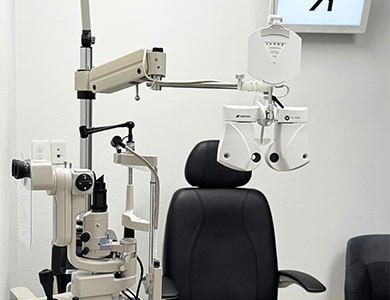Don’t Wait Until You Notice Vision Loss
Vision loss doesn’t usually happen overnight. Most serious eye diseases develop gradually—and by the time symptoms show up, the damage is often harder to reverse.
That’s why regular eye exams matter.
Optometrists and ophthalmologists are trained to detect eye disease early—before it affects your daily life. The earlier we catch it, the more we can do to protect your sight.
How Common Is Vision Loss?
More than 4.2 million Americans over the age of 40 are either partially blind or have reduced visual acuity. In many cases, this could have been prevented or slowed with early diagnosis and treatment.
These are the most common eye diseases we see in practice:
Age-Related Macular Degeneration (AMD)
This condition mostly affects older adults and slowly damages the part of your retina responsible for sharp central vision.
There are two types:
Dry AMD – The more common form, it progresses gradually as the retina thins with age. It typically affects both eyes over time.
Wet AMD – Less common but more severe, this form happens when abnormal blood vessels grow under the retina and leak fluid or blood, leading to faster vision loss.
Left untreated, macular degeneration can cause permanent loss of central vision—making it difficult to read, recognize faces, or drive.
Cataracts
Cataracts are a natural part of aging for many people. By age 40, around 20 million Americans already have a cataract in one or both eyes.
Cataracts cloud the eye’s lens, making everything look blurry, hazy, or dim. While they can develop at any age, they're most often linked to aging.
Fortunately, cataract surgery is safe, effective, and widely available. During the procedure, the clouded lens is replaced with a clear artificial one—dramatically improving vision for most patients.
Diabetic Retinopathy
If you have diabetes, your risk for this eye disease is significantly higher.
Diabetic retinopathy damages the tiny blood vessels in the retina. It typically affects both eyes and progresses in stages:
Mild to moderate non-proliferative retinopathy – Some vessels become blocked.
Severe non-proliferative retinopathy – More blockages limit oxygen to the retina.
Proliferative retinopathy – New, fragile vessels form and leak, increasing the risk of vision loss.
The best defense? Managing your diabetes with a healthy lifestyle, keeping blood sugar and blood pressure under control, and scheduling regular dilated eye exams. Early treatment can preserve your vision.
Glaucoma
Glaucoma is actually a group of diseases that damage the optic nerve, often due to increased pressure in the eye. It’s one of the leading causes of irreversible blindness—but it’s also manageable when caught early.
There are two main types:
Open-angle glaucoma – The most common form. It progresses slowly and without noticeable symptoms. Many people don’t realize they have it until permanent vision loss has already occurred.
Closed-angle glaucoma – Less common, but much more sudden and painful. This is considered a medical emergency and needs immediate care.
Routine eye exams are critical, especially because glaucoma often shows no warning signs early on.
Protect Your Vision with Preventive Care
You don’t have to wait for symptoms to take action. Regular comprehensive eye exams give you a clearer picture of your eye health—and give us a chance to catch problems early.
If you’re living with diabetes, have a family history of eye disease, or notice changes in your vision, don’t wait.
Schedule an exam today. We’re here to help you protect your sight for the long haul.









